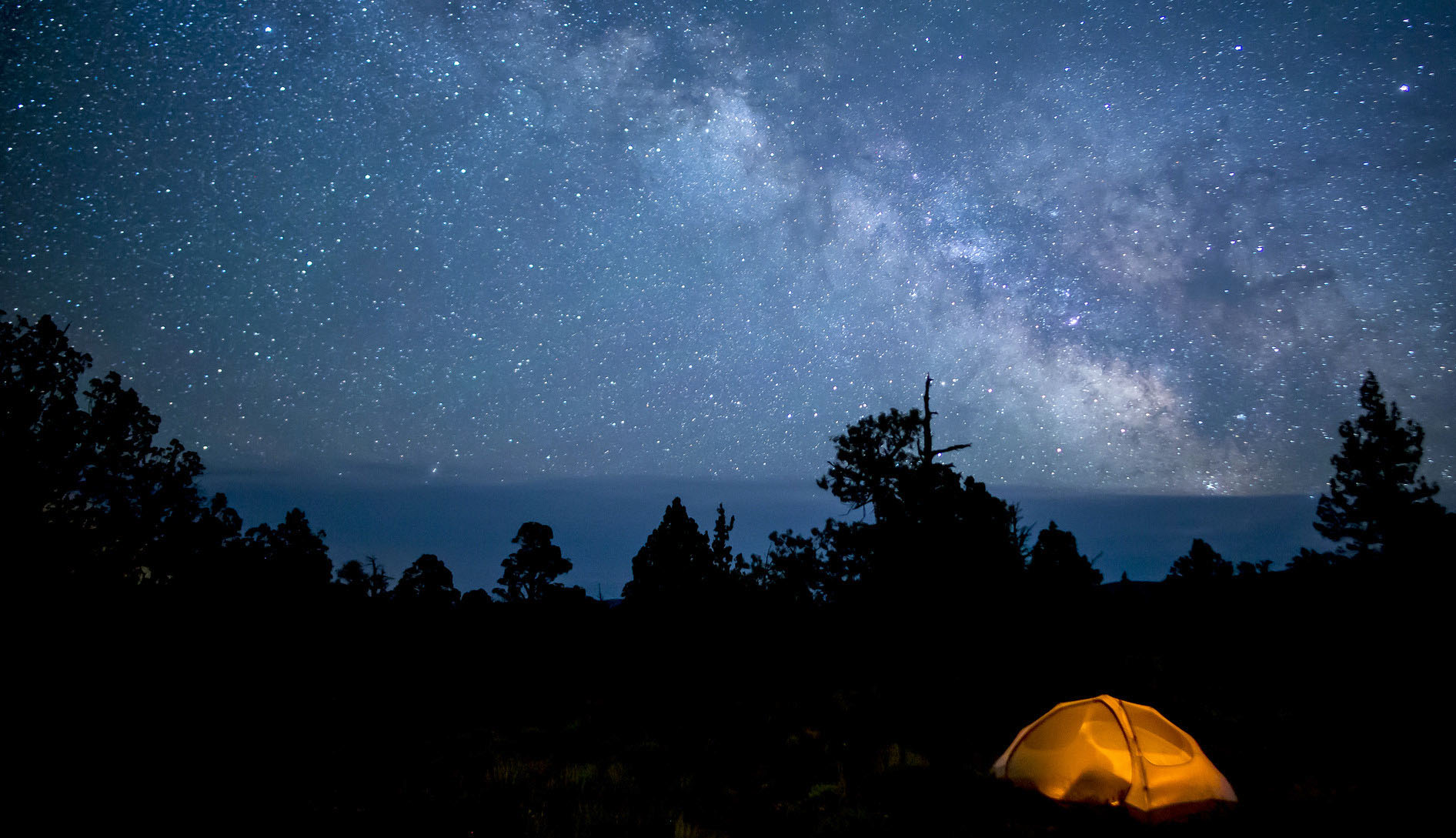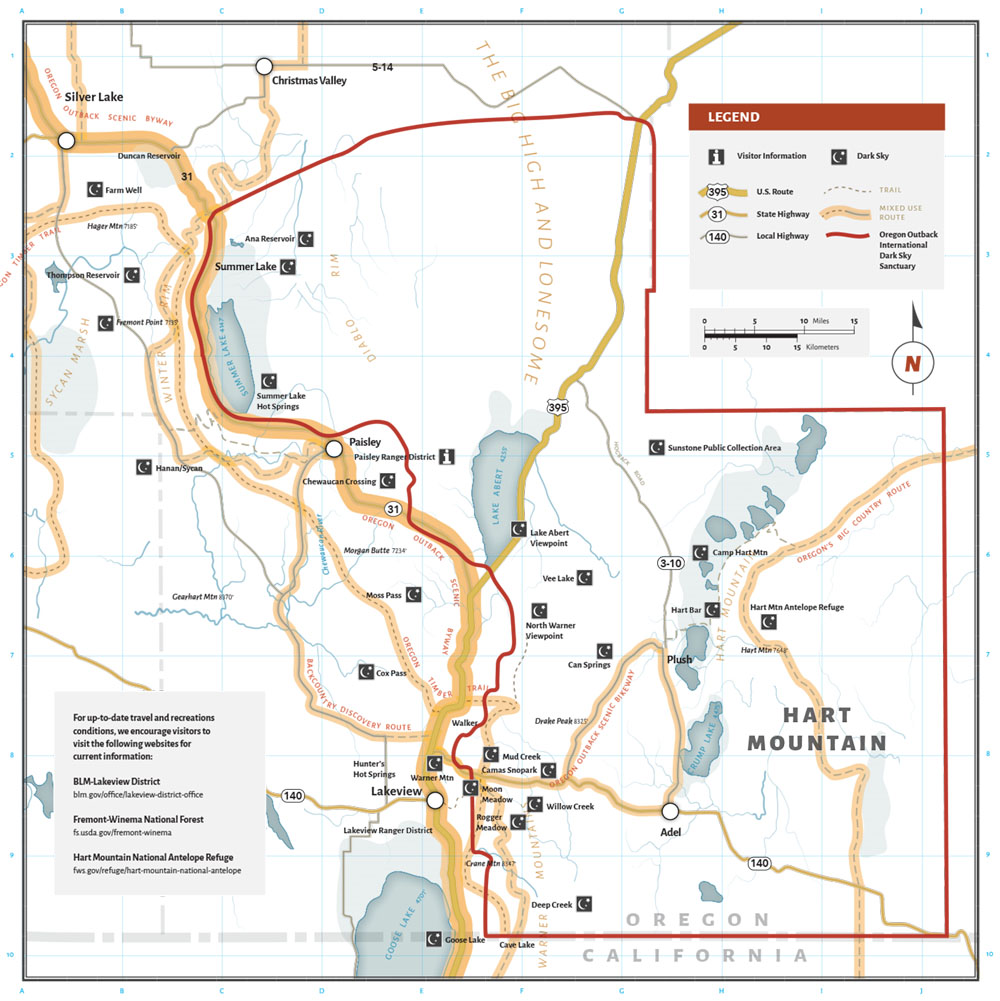Sky gazing starring Oregon’s parks

As September daylight grows shorter and nights longer, what better time to visit Oregon’s parks to view celestial events. Oregon is a prime destination for stargazing enthusiasts, thanks to its diverse natural lands and relatively low light pollution in many areas.
Nestled in Lake County of Southern Oregon, the Oregon Outback International Dark Sky Sanctuary offers one of the most breathtaking night sky viewing experiences in the United States.
One of the best places to see stars is the Prineville Reservoir State Park. Designated as Oregon’s first official International Dark Sky Park, this area offers stunning views of the night sky, especially during the summer months when special tours are offered. The park is in Central Oregon, far from the light pollution of major cities, making it ideal for observing constellations, meteor showers, and even the Milky Way.
Scenic beauty, camping, and water recreation are at their finest at this high desert park. Mountain waters flowing out of the Ochoco Mountain Range join to form the Crooked River. The river, confined by its canyon and the Bowman Dam, forms the 15-mile long, 3,000-acre Prineville Reservoir.
Another fantastic spot is the John Day Fossil Beds National Monument. This area is not only known for its rich paleontological history but also for its dark skies. The monument’s remote location in Eastern Oregon provides incredibly clear and dark skies, perfect for stargazing. The Sheep Rock Unit, in particular, is popular among amateur astronomers and photographers looking to capture the brilliance of the stars. Visitors here can also enjoy the striking daytime landscapes before settling in for an unforgettable night under the stars.
For those looking to combine stargazing with a visit to one of Oregon’s most famous natural landmarks, Crater Lake National Park is an excellent choice. While the park is best known for its deep blue lake, it also offers some of the darkest skies in the state. Crater Lake’s high elevation and distance from urban centers make it an exceptional location for observing celestial events. During the summer, the park hosts ranger-led night sky programs that provide both educational insights and the opportunity to view planets, stars, and galaxies through telescopes.
In southeastern Oregon’s Great Basin, there is an area so remote, sparsely populated, and wildly beautiful that it is often referred to as the “Oregon Outback.” Spanning about 2.5 million acres, it features small communities, historic homesteads, and is rich in indigenous history and archaeological sites, including those of the Northern Paiute people. Its pristine night skies, some of the darkest globally, are recognized for minimal light pollution, making it a prime location for stargazing and astronomical observation. The Oregon Outback is rich with outdoor recreation opportunities, including hiking, biking and bird-watching, along with fishing and hunting, with small cabins, lodges and hot spring resorts to spend the night. It’s a place to explore the Summer Lake or Hart Mountain wildlife refuges by day and take a dazzling star walk at night.
The region boasts remarkable natural and geological attractions, including the Abert Rim, notable hot springs, and diverse wildlife, making it a haven for outdoor enthusiasts. The effort to certify this area as a Dark Sky Sanctuary involved collaboration among various stakeholders who worked on light pollution reduction, education, and night sky preservation initiatives. Abert Rim is the longest exposed fault scarp in North America, and one of the highest fault scarps in the United States. It towers over Lake Abert -Oregon’s only saltwater lake that attracts a diverse population of migratory waterfowl.
UPCOMING CELESTIAL EVENTS 2025

